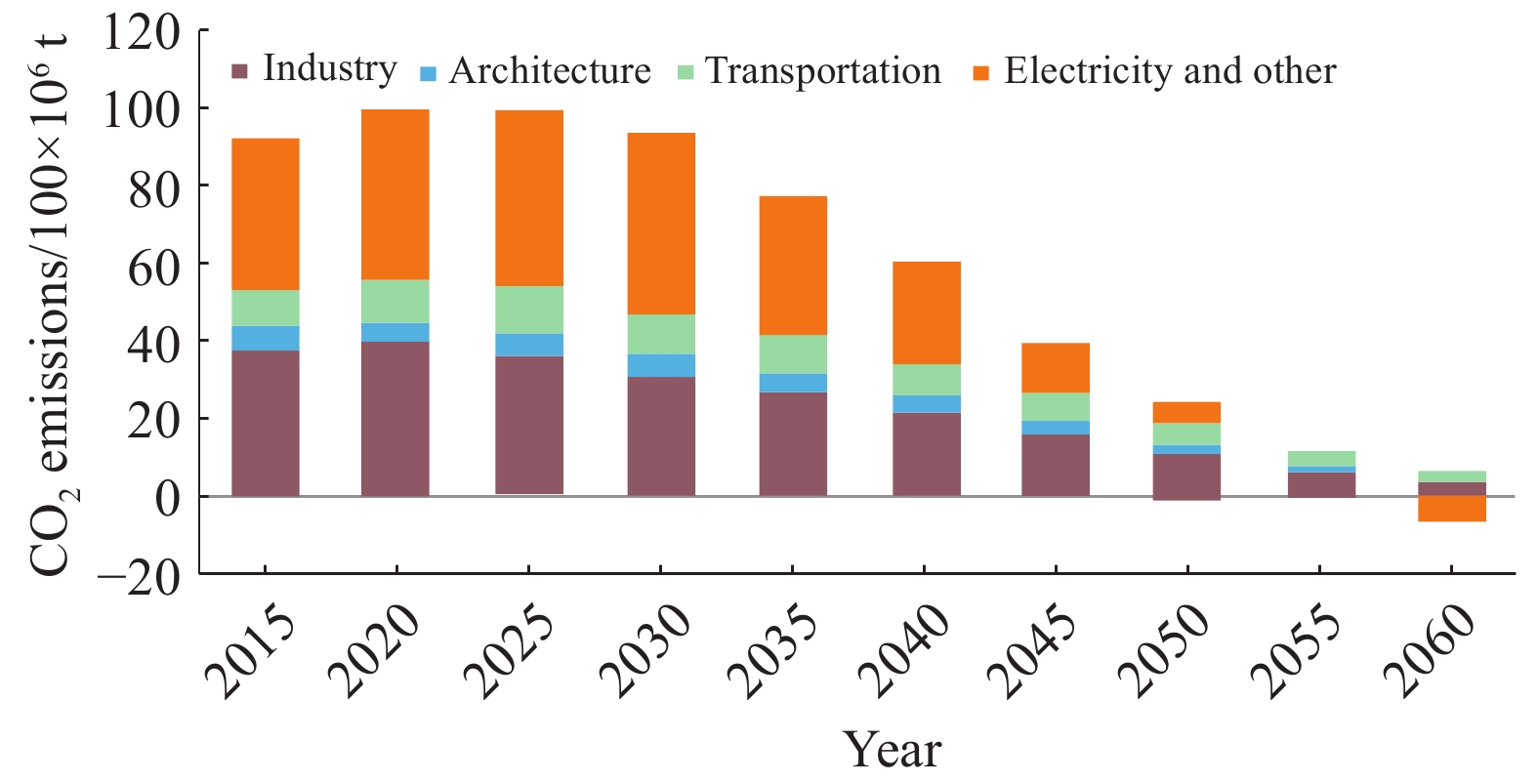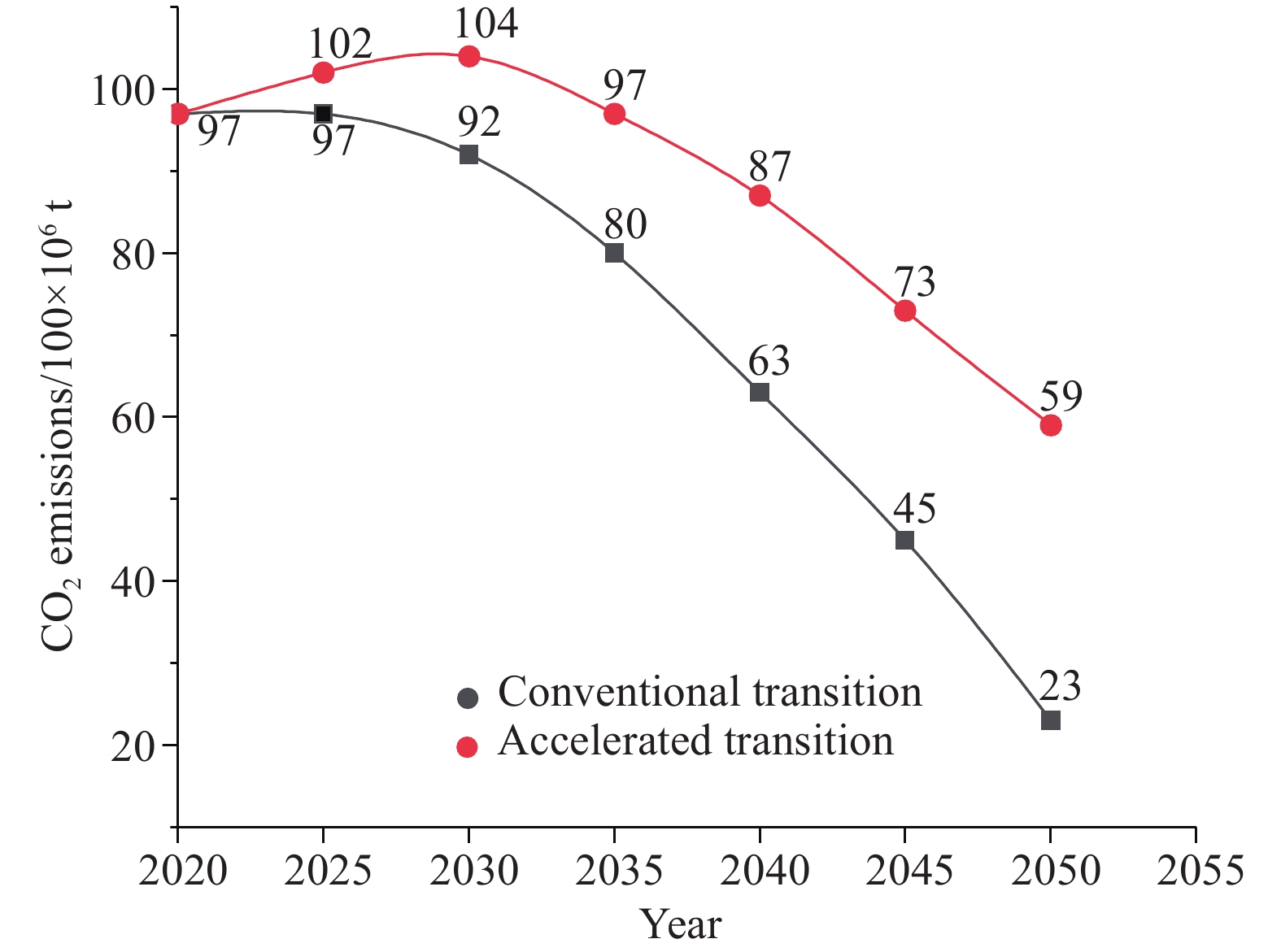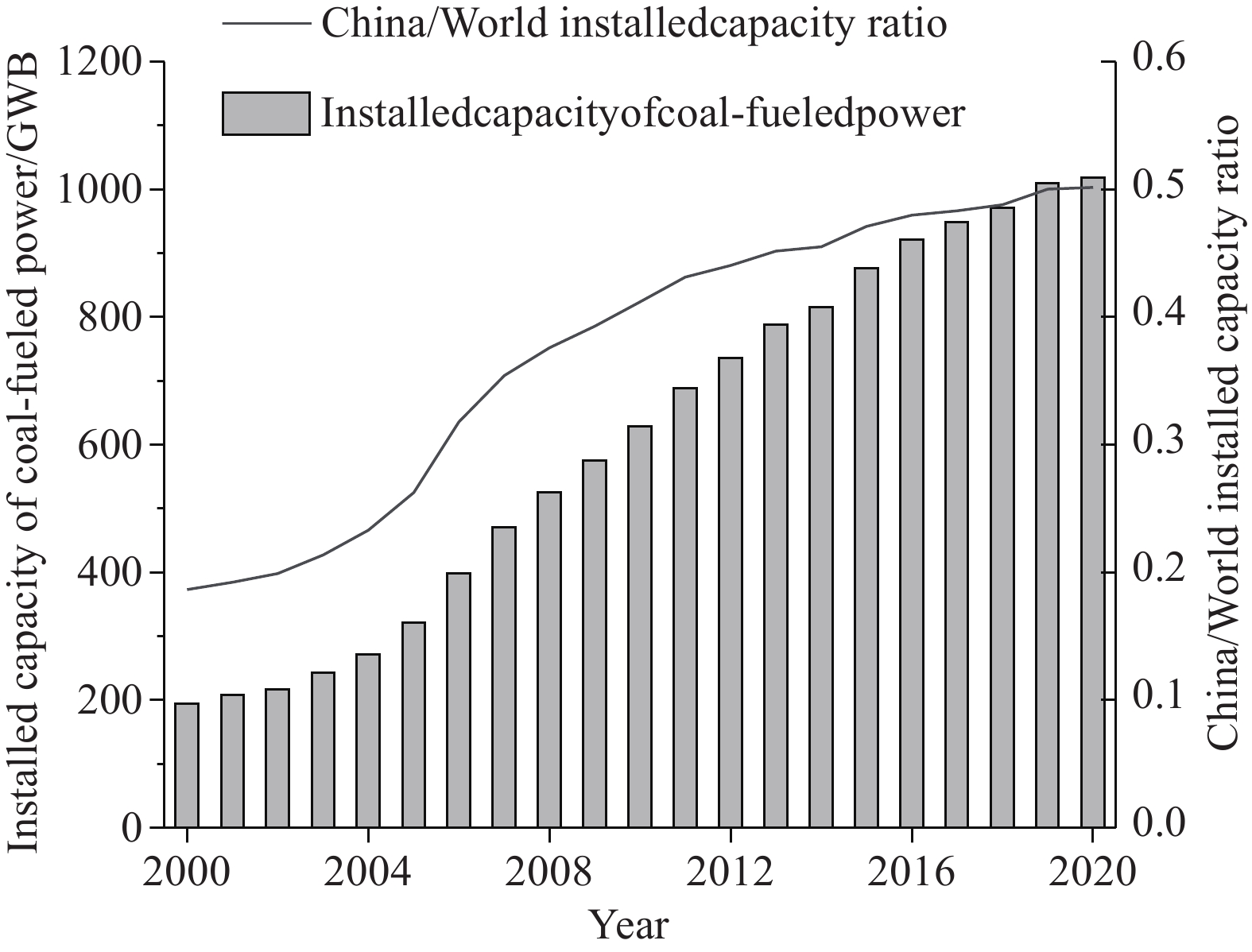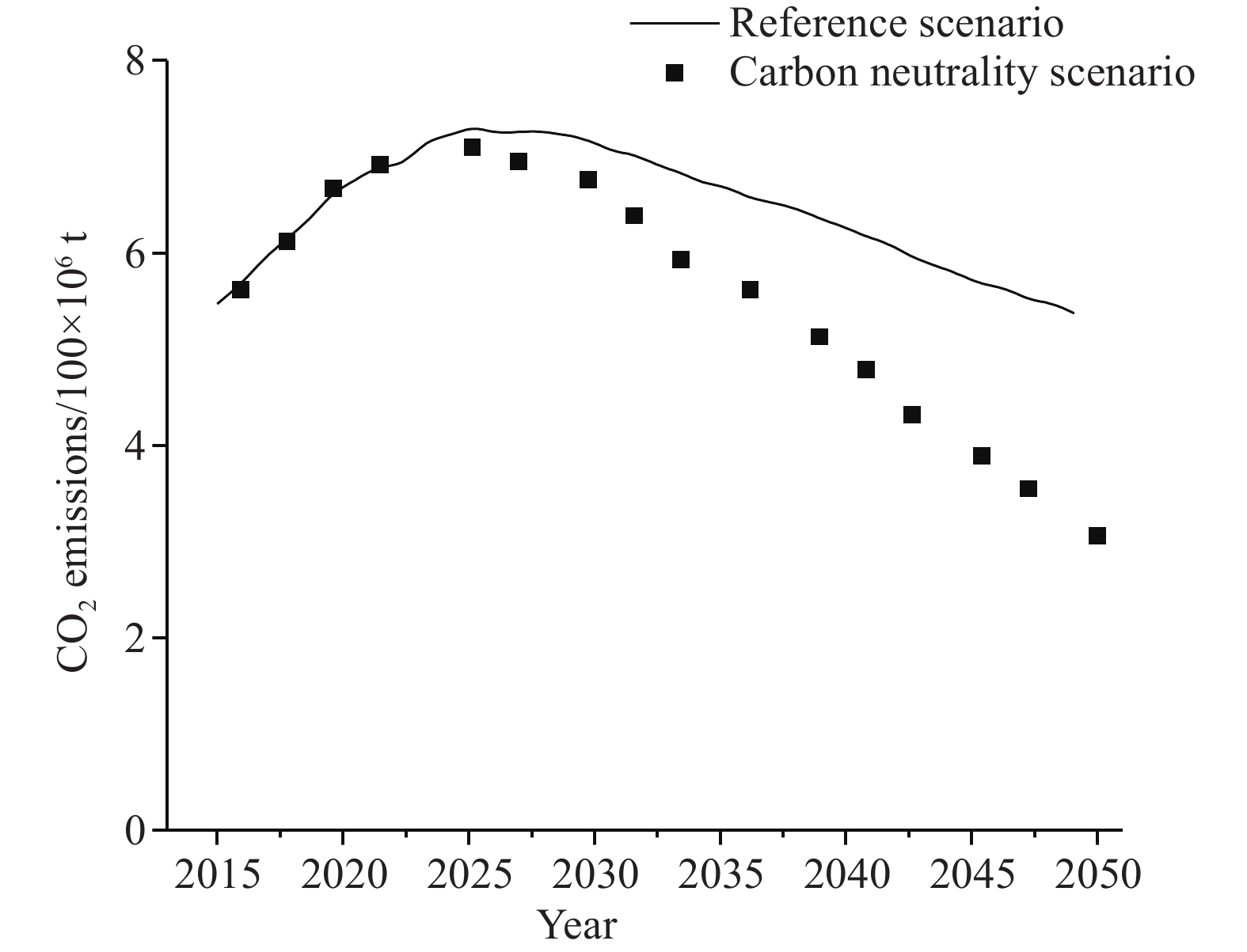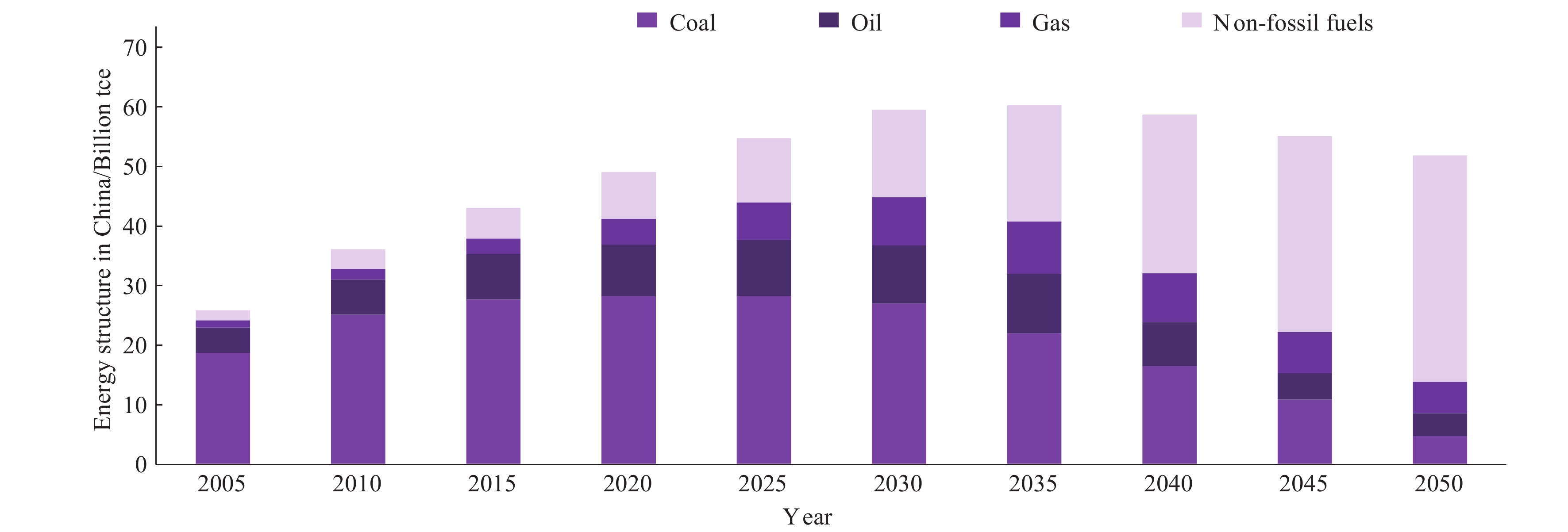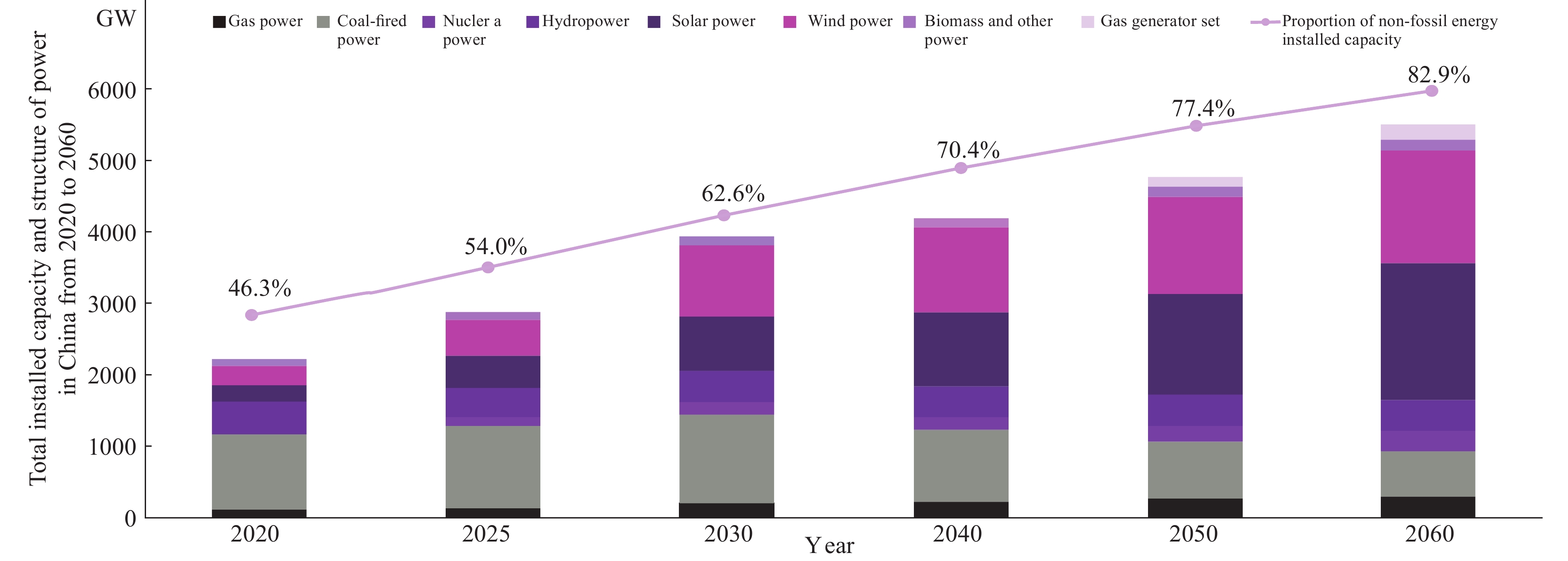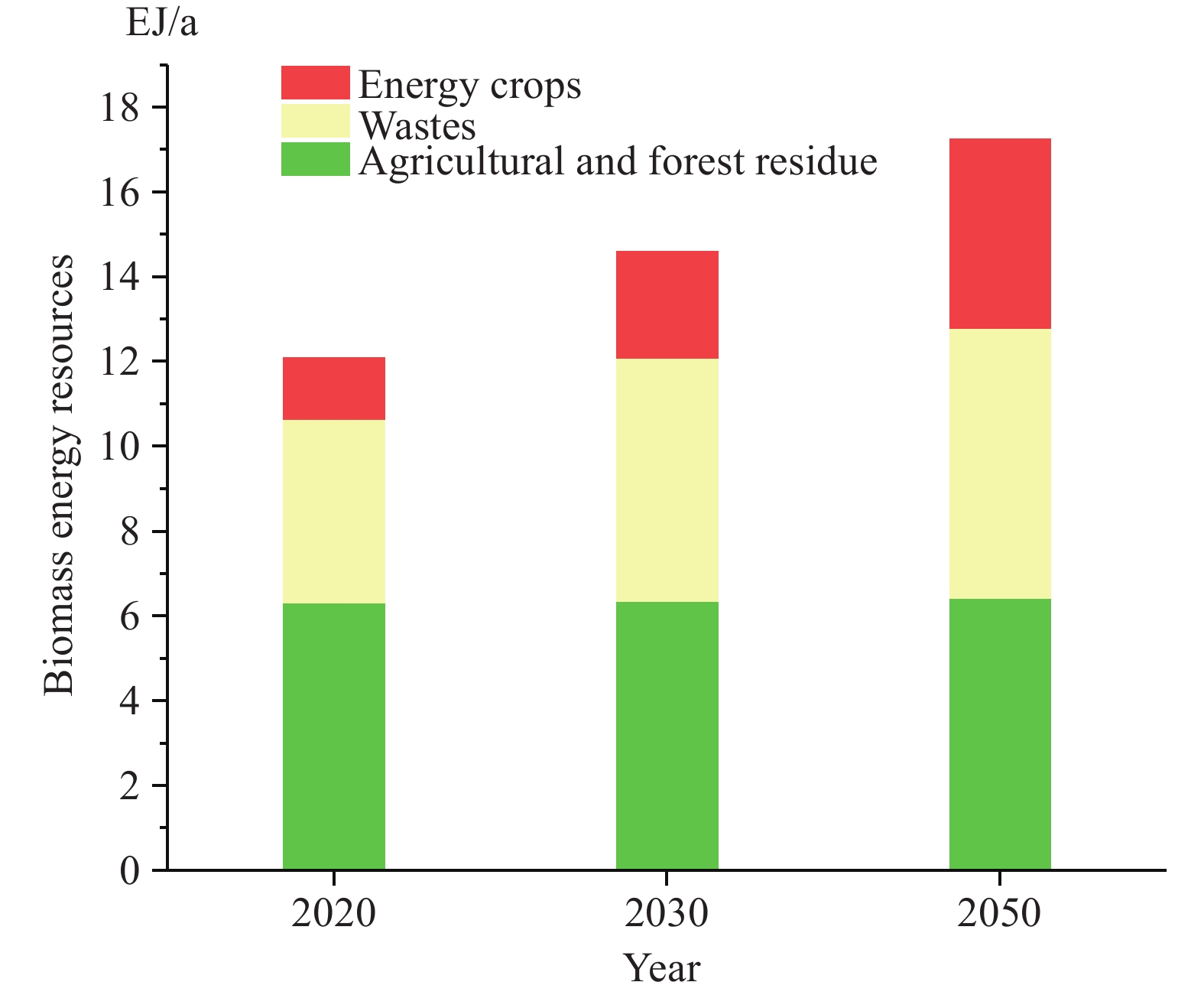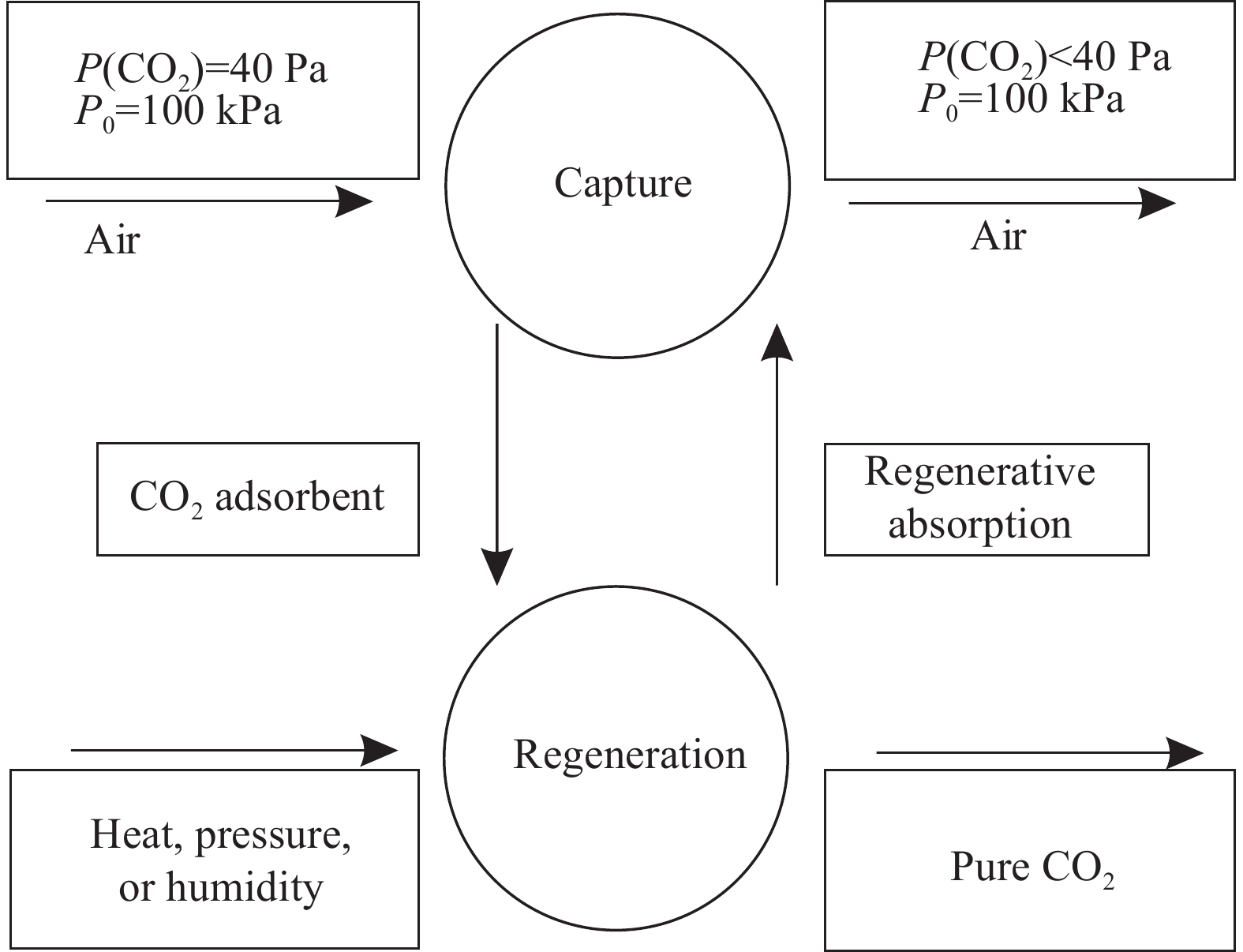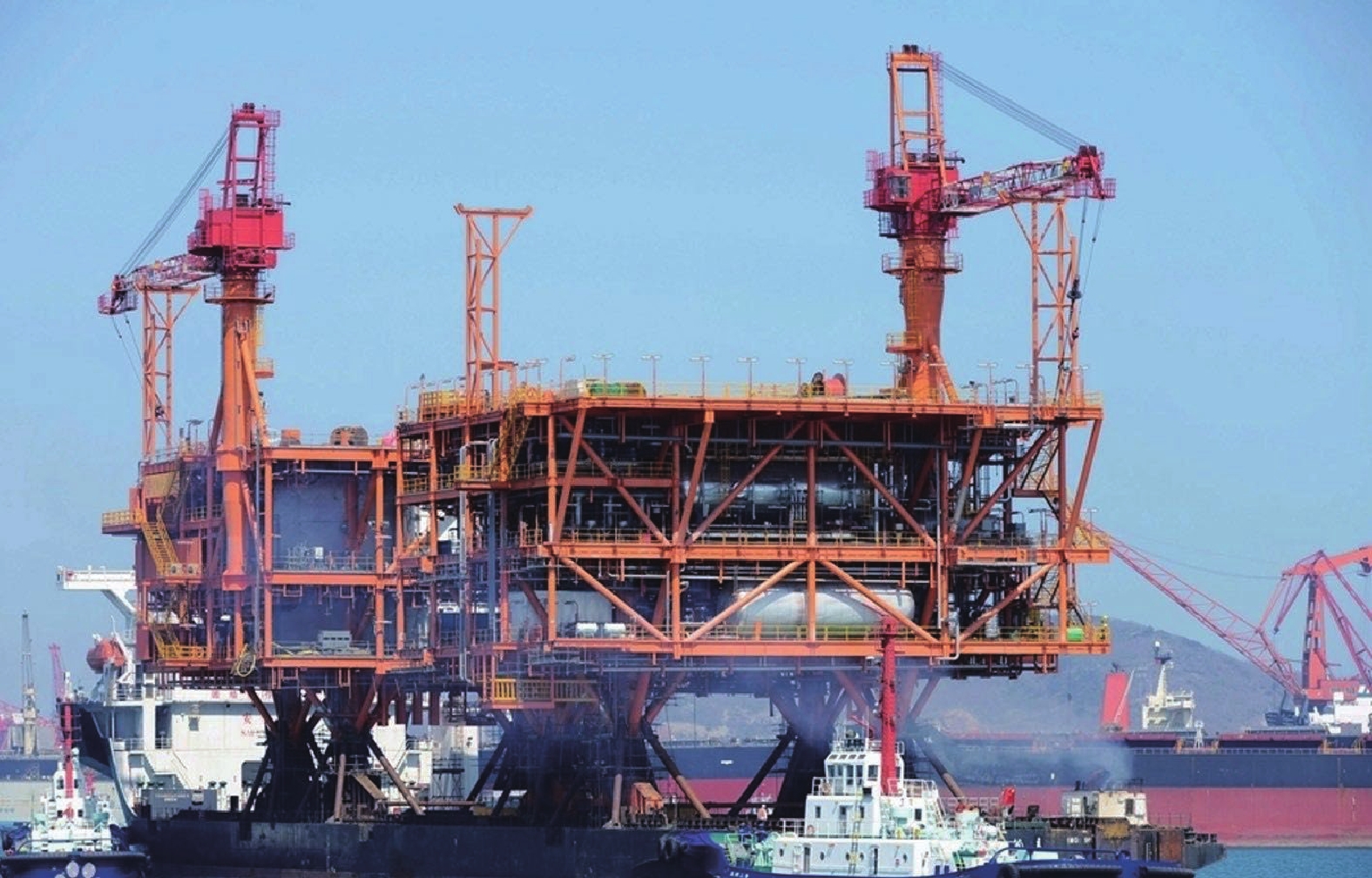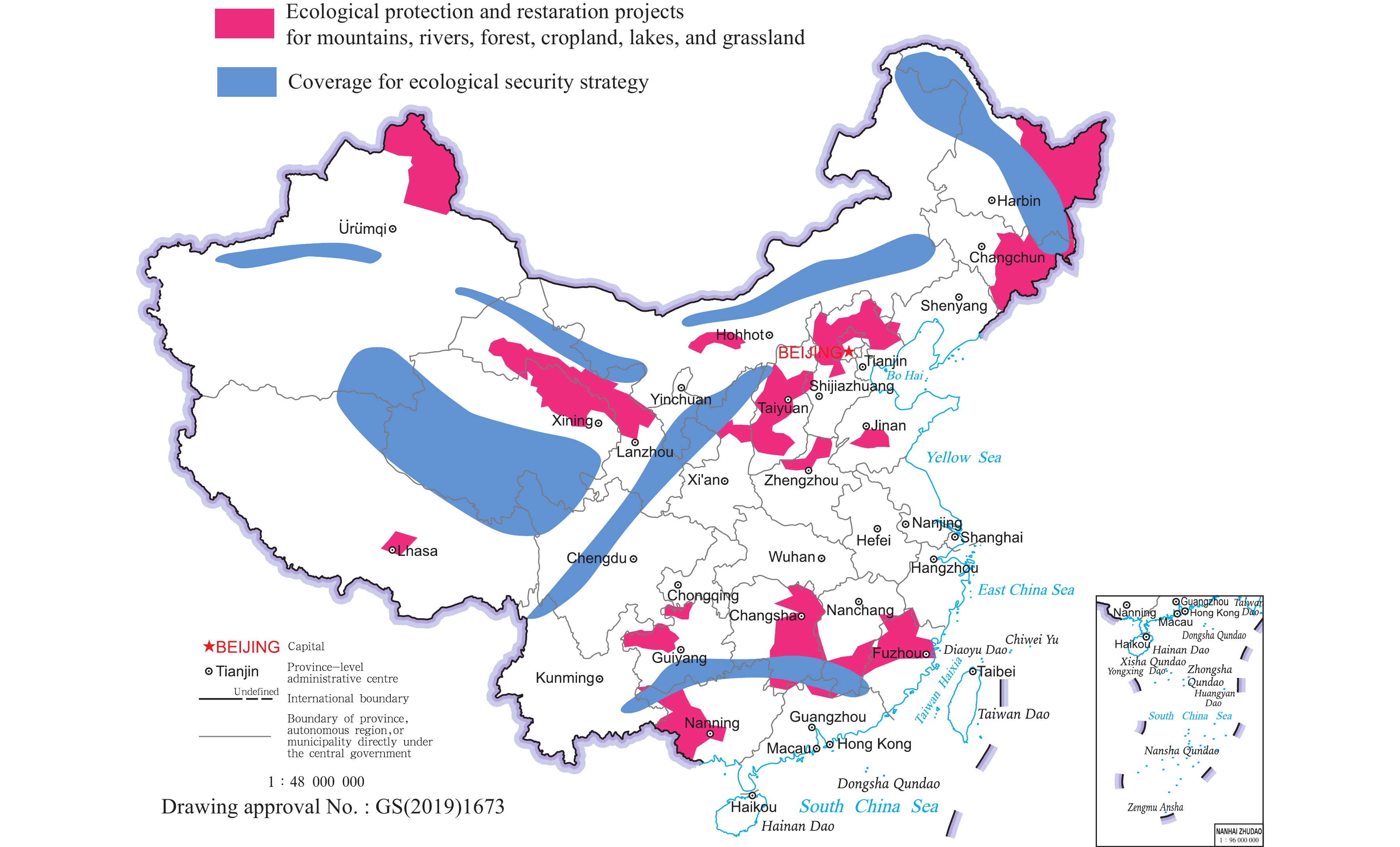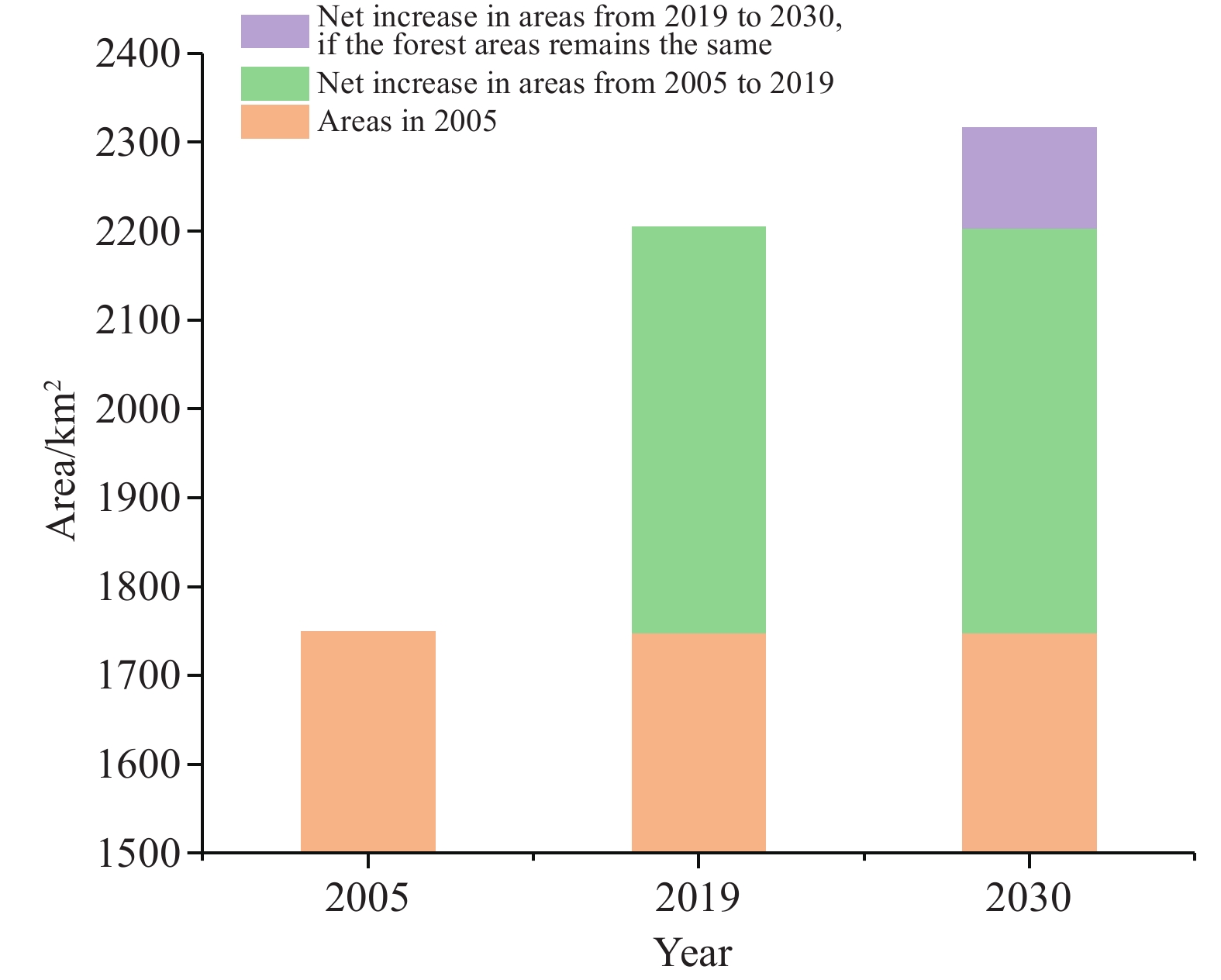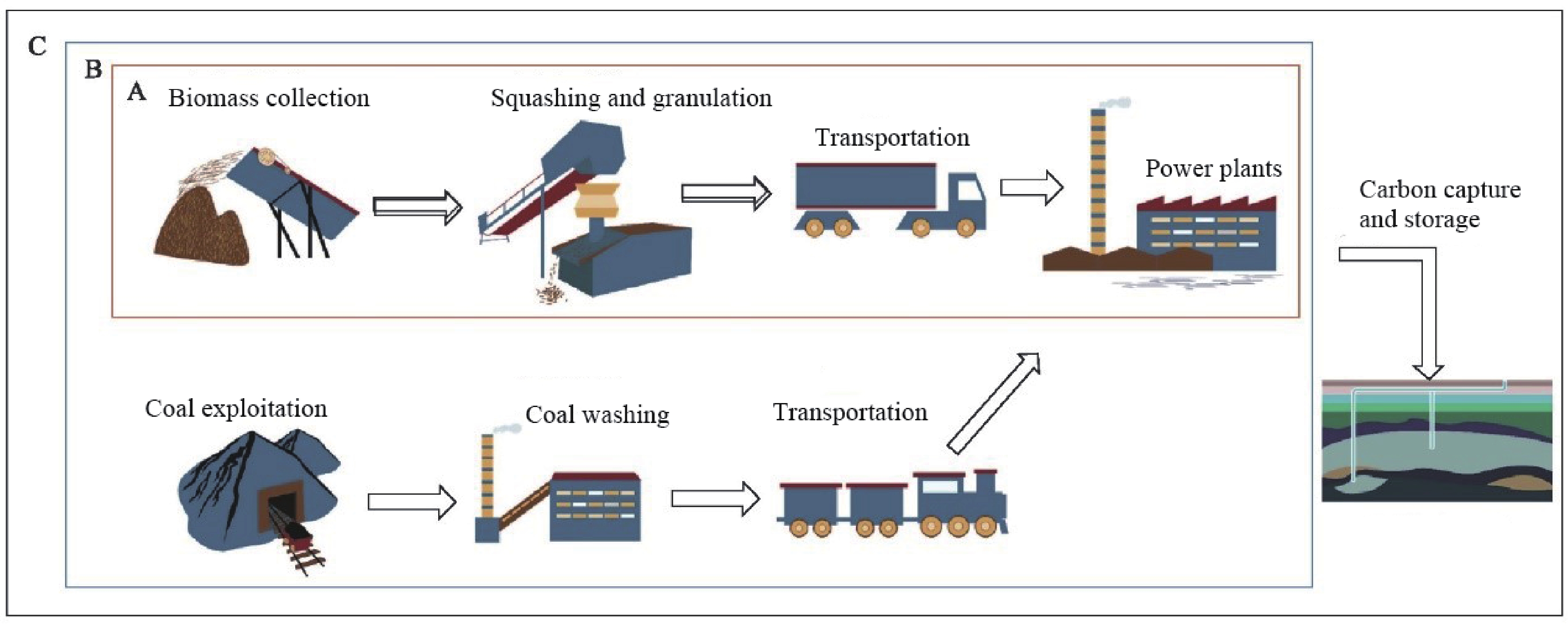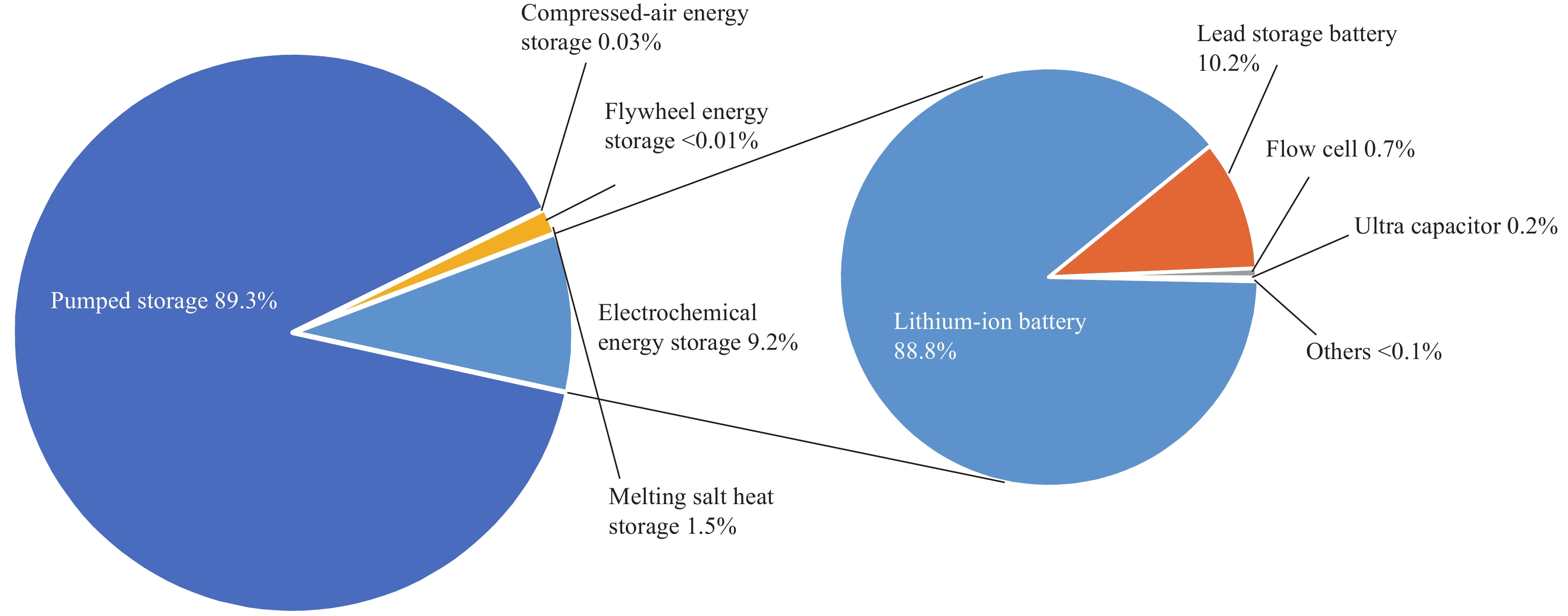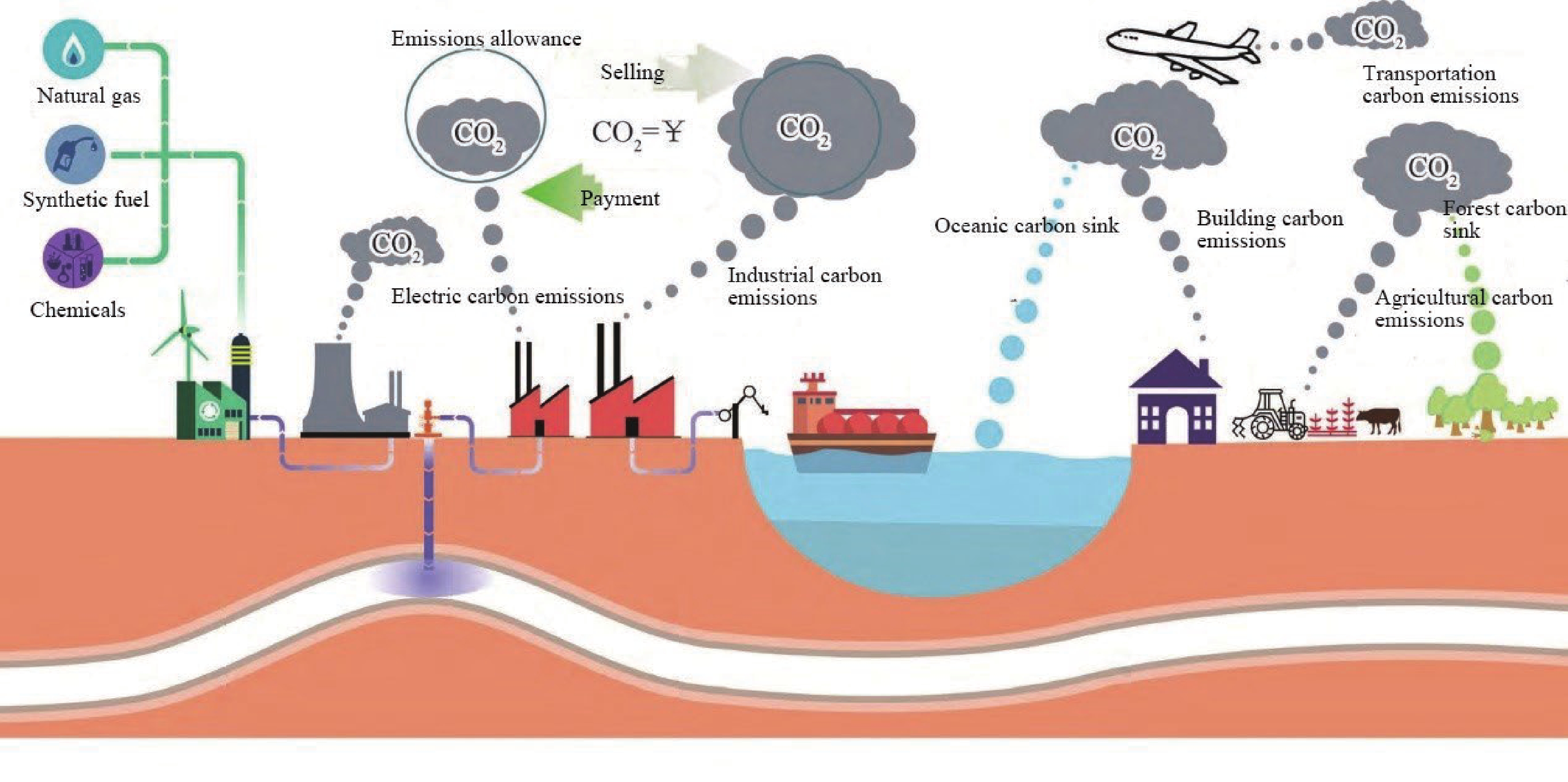| Citation: | Yao Wang, Chi-hui Guo, Xi-jie Chen, Li-qiong Jia, Xiao-na Guo, Rui-shan Chen, Mao-sheng Zhang, Ze-yu Chen, Hao-dong Wang, 2021. Carbon peak and carbon neutrality in China: Goals, implementation path and prospects, China Geology, 4, 720-746. doi: 10.31035/cg2021083 |
Carbon peak and carbon neutrality in China: Goals, implementation path and prospects
-
Abstract
Climate change is a common problem in human society. The Chinese government promises to peak carbon dioxide emissions by 2030 and strives to achieve carbon neutralization by 2060. The proposal of the goal of carbon peak and carbon neutralization has led China into the era of climate economy and set off a green change with both opportunities and challenges. On the basis of expounding the objectives and specific connotation of China’s carbon peak and carbon neutralization, this paper systematically discusses the main implementation path and the prospect of China’s carbon peak and carbon neutralization. China’s path to realizing carbon neutralization includes four directions: (1) in terms of carbon dioxide emission control: energy transformation path, energy conservation, and emission reduction path; (2) for increasing carbon sink: carbon capture, utilization, and storage path, ecological governance, and land greening path; (3) in key technology development: zero-carbon utilization, coal new energy coupling, carbon capture utilization and storage (CCUS), energy storage technology and other key technology paths required to achieve carbon peak and carbon neutralization; (4) from the angle of policy development: Formulate legal guarantees for the government to promote the carbon trading market; Formulate carbon emission standards for enterprises and increase publicity and education for individuals and society. Based on practicing the goal and path of carbon peak and carbon neutralization, China will vigorously develop low carbon and circular economy and promote green and high-quality economic development; speed up to enter the era of fossil resources and promoting energy transformation; accelerate the integrated innovation of green and low-carbon technologies and promote carbon neutrality.
-

-
References
Agency IE. 2020. World energy outlook 2020, 20–22. An GJ. 2021. Discussion on the path of green financial innovation under the goal of carbon neutralization. South China Finance, 534(2), 3–12 (in Chinese with English abstract). Sutherland BR. 2019. Pricing CO2 Direct Air Capture. Joule, 3(7), 1571–1573. doi: 10.1016/j.joule.2019.06.025. Cai JC, Wan T. 2019. Industrial application of enhanced catalytic cracking technology (dcc-plus). Petroleum Processing and Petrochemicals, 50(11), 16–20 (in Chinese with English abstract). Cai ZN, Cheng LJ, Li TT, Zheng XH, Wang L, Han SH, Wang K, Qu X, Jiang F, Zhang YY, Zhu JH, Long SM, Sun Y, Jia BH, Yuan WP, Zhang TY, Zhang Q, Xie JB, Zhu JW, Liu ZQ, Wu L, Yang DX, Wei K, Wu L, Zhang W, Liu Y, Cao JJ. 2021. Analysis of some earth system science and technology problems under the goal of carbon neutralization. Bulletin of Chinese Academy of Sciences, 36(5), 602–613 (in Chinese with English abstract). doi: 10.16418/j.issn.1000-3045.20210402002. Chao QC. 2016. A new journey of global cooperation to address climate change. Chinese Science Bulletin, 61(11), 1143–1145 (in Chinese with English abstract). doi: 10.1360/zk2016-61-11-1143. Chen C, Jia H, Li YN. 2019. Biomass energy carbon capture and storage technology: Realizing green negative emission. Energy and thermal engineering branch of China Metal Society, Northeastern University. Proceedings of the 10th National Annual Conference on energy and thermal engineering. Northeast University: Energy and Thermal Engineering Branch of China Metal Society, 5 (in Chinese with English abstract). Chen F, Yu HC, Bian ZF, Yin DY. 2021. Crisis and response of coal industry development under the vision of carbon neutralization. Journal of China Coal Society, 46(6), 1808–1820 (in Chinese with English abstract). doi: 10.13225/j.cnki.jccs.2021.0368. Chen HS, Liu C, Xu YJ, Yue F, Liu W, Yu ZH. 2021. Strategic position and role of energy storage under the goal of carbon peak and carbon neutralization. Energy Storage Science and Technology, 10(5), 1477–1485 (in Chinese with English abstract). doi: 10.19799/j.cnki.2095-4239.2021.0389. Chen JJ, Wei F. 2020. The yield of crude oil direct pyrolysis billet can reach 70%: An interview with Wei Fei, Professor of Tsinghua University, distinguished professor of the Ministry of education and director of Beijing Key Laboratory of green chemical reaction engineering and technology. China Petrochemical Industry Observer, 272(9), 12–15 (in Chinese with English abstract). Danish Ministry of Climate. 2019. Energy and Utilities. Climate act. https://ens.dk/en/ourresponsibilities/energyclimate-politics/danish-climate-policies. Den EM, Fekete H, Hohne N, Admiraal A, Forsell N, Hof AF, Olivier JGJ, Roelfsema M, van Soest H. 2016. Greenhouse gas emissions from current and enhanced policies of China until 2030: Can emissions peak before 2030? Energy Policy, 89, 224–236. doi: 10.1016/j.enpol.2015.11.030. Deng X, Xie J, Teng F. 2021. What is “carbon neutralization” ? Advances in Climate Change Research, 17(1), 107–113 (in Chinese with English abstract). Deng Y. 2021. In 2030, China’s carbon reduction through biomass energy will exceed 900 million tons. China Environment News, 2021-09-23(7) (in Chinese with English abstract). doi:10.28079/n.cnki.nchjb.2021.005005. Environment and Climate Change Canada. 2016. Canada’s Mid-Century Long-Term Low-Greenhouse Gas Development Strategy. Gatineau, Quebec, 1–91. www.publications.gc.ca/pub?id=9.825953&sl=0. Fan JL, Li J, Yan L, Yu CJ, Zhang X, Xiao P, Wang T, Wang XL, Zeng ZH, Shen S, Ma XS, Fang MX. 2021. Analysis of the application potential of biomass-carbon capture and storage technology in China. Thermal Power Generation, 50(1), 7–17 (in Chinese with English abstract). doi: 10.19666/j.rlfd.202007204. Fang JY, Yu GR, Ren XB, Liu GH, Zhao XQ. 2015. Carbon sequestration in China’s terrestrial ecosystems under climate change: Progress on ecosystem carbon sequestration from the CAS Strategic Priority Research Program. Bulletin of Chinese Academy of Sciences, 30(6), 848–857, 875 (in Chinese with English abstract). doi: 10.16418/j.issn.1000-3045.2015.06.019. Fu CH. 2021. Helping to achieve the double carbon goal and promoting the high-quality development of circular economy. China Reform Daily, 2021-07-09(2) (in Chinese with English abstract). Government of Canada. 2020. Strategic assessment of climate change (revised). https://www.canada.ca/en/services/environment/conservation/assessments/strategic-assessments/climate-change.html. Guo YQ. 2021. Ecological conservation and restoration contribute to carbon neutrality. China Natural Resources News, 2021-03-10(3) (in Chinese with English abstract). doi:10.28291/n.cnki.ngtzy.2021.000815. He JK. 2013. Analysis of peak CO2 emissions: China’s emission reduction target and countermeasures. China Population, Resources and Environment, 23(12), 1–9 (in Chinese with English abstract). He JK. 2021. Low-carbon transition of energy and economy under the goal of carbon neutrality of carbon peak. Journal of Environmental Economics, 6(1), 1–9 (in Chinese with English abstract). HIS Markit. 2020. Hydrogen and renewable gas forum. https://ihsmarkit.com/products/hydrogen-global-market.html. IPCC. 2013. Climate change 2013: The Physical Science Basis. https://doi.org/10.1017/CBO9781107415324. IPCC. 2018. Special report on global warming of 1.5℃. UK: Cambridge University Press. https://www.ipcc.ch/sr15/. IRENA. 2020. Renewable power generation costs in 2019. https://www.irena.org/publications/2020/Jun/Renewable-Power-Costs-in-2019. Jiang KJ, He CM, Dai HC, Liu J, and Xu XY. 2018. Emission scenario analysis for China under the global 1.5℃ target. Carbon Management, 9(5), 481–491. Jiang KJ, Xiang PP, He CM, Feng SB, Liu CY, Tan X, Chen S, Dai CY, Deng LC. 2021. Analysis of the impact of zero carbon electricity on the layout of industrial sectors in China. Global Energy Internet, 4(1), 5–11 (in Chinese with English abstract). doi: 10.19705/j.cnki.issn2096-5125.2021.01.002. Lackner K, Ziock HJ, Grimes P. 1999. Carbon Dioxide Extraction from Air: Is It An Option?. Office of Scientific and Technical Information Technical Reports. https://www.osti.gov/biblio/20013487-carbon-dioxide-extraction-from-air-option. Lei C, Li T. 2021. Key technologies and development status of hydrogen energy utilization under the background of carbon neutralization. Power Generation Technology, 42(2), 207–217 (in Chinese with English abstract). Lei XJ. 2020. Photosynthesis is carbon sink. Energy of China, 42(6), 4–12 (in Chinese with English abstract). Lenton TM, Rockström J, Gaffney O, Rahmstorf S, Richardson K, Steffen W, Schellnhuber HJ. 2019. Climate tipping points: Too risky to bet against. Nature, 575(7784), 592–595. doi: 10.1038/d41586-019-03595-0. Li HM, Zhang X, Zhang ZY, Wang YF. 2020. Path to peak carbon emission in Beijing and policy enlightenment. Environmental Protection, 48(5), 24–31 (in Chinese with English abstract). Li J, Cai WJ, Wang C, Chen YD. 2021. Research on biomass energy technology deployment strategy of China’s power sector under the vision of carbon neutralization. Chinese Journal of Environmental Management, 13(1), 59–64 (in Chinese with English abstract). doi: 10.16868/j.cnki.1674-6252.2021.01.059. Li SC. 2021. Scientific understanding of forest carbon sink function. Contemporary Guizhou, 649(31), 79 (in Chinese with English abstract). Li Y, Gao L. 2021. Realization path and mode choice of China's “carbon neutralization” goal. Journal of South China Agricultural University (Social Science Edition), 20(5), 77–93 (in Chinese with English abstract). Li ZW, Zhao SQ, Liu JS. 2019. Wind light water gas fire storage joint optimal scheduling based on opportunity constrained objective programming. Electric Power Automation Equipment, 39(8), 214–223 (in Chinese with English abstract). doi: 10.16081/j.epae.201908024. Lin D, Zhang L, Chen C, Lin Y, Wang J, Qiu R, and Hu X. 2019. Understanding driving patterns of carbon emissions from the transport sector in China: Evidence from an analysis of panel models. Clean Technologies and Environmental Policy, 21(6), 1307–1322. doi: 10.1007/s10098-019-01707-y. Litz P, Tu JJ. 2020. Fair Transformation Path of Decoalization in Germany. China Investment Magazine, (1), 66–67. Liu MP. 2021. Twelve policy suggestions for China to achieve the goal of “carbon neutrality”. China Electrical Equipment Management, 53(2), 23–25 (in Chinese with English abstract). Liu Q, Chen Y, Teng F, Tian C, Zheng XQ, Zhao XC. 2017. Path and policy analysis of China’s deep decarbonization. China Population, Resources and Environment, 27(9), 162–170 (in Chinese with English abstract). doi: 10.12062/cpre.20170464. Liu SQ, Chang ZB, Liu JC. 2021. Key technologies and development prospects of deep coal in-situ gasification mining. Journal of Mining Science and Technology, 6(3), 261–270 (in Chinese with English abstract). doi: 10.19606/j.cnki.jmst.2021.03.002. Liu W, Wan YM, Xiong YL, Liu Jian. 2021. Progress and prospect of low carbon clean hydrogen energy in China under the “double carbon” goal. Energy Storage Science and Technology, 1–8 (in Chinese with English abstract). doi: 10.19799/j.cnki.2095-4239.2021.0385. Lu Q, Wings H. 2007. Technical system and development trend of low energy consumption buildings in Germany. Architectural Journal, 27(9), 23–27 (in Chinese with English abstract). Lu X. 2021. Coal “green actions” accelerated: 200 billion RMB special funding released to support coal clean and efficient utilization. China Times. https://m.chinatimes.net.cn/article/112480.html. Luo M, Yu EY, Zhou Y, Ying LX, Wang J, Wu G. 2019. Distribution and technical strategies of ecological protection and restoration projects for mountains-rivers-forests-farmlands-lakes-grasslands. Acta Ecologica Sinica, 39(23), 8692–8701. Ma LL, Tang ZH, Wang CW, Sun YM, Lü Xuefeng, Chen Yong. 2019. Research status and future development strategy of biomass energy. Bulletin of Chinese Academy of Sciences, 34(4), 434–442 (in Chinese with English abstract). doi: 10.16418/j.issn.1000-3045.2019.04.008. Ma T, Chen WY. 2016. Study on the peak level and peak path of carbon emissions in China in 2030. China Population, Resources and Environment, 26(1), 1–4 (in Chinese with English abstract). Mi JF, Ma XF. 2019. Analysis on the development trend of CCUS technology in China. Proceedings of the CSEE, 39(9), 2537–2544 (in Chinese with English abstract). doi: 10.13334/j.0258-8013.pcsee.190375. National Development and Reform Commission. 2016. National Energy Administration. Revolutionary strategy of energy production and consumption (2016-2030) (in Chinese). Pan SQ, Zou CC, Li Y, Jing ZH, Liu ET, Yuan M, Zhang GS, Yang Z, Wu ST, Qiu Z, Liu HL. 2021. Major biological events and the formation and evolution of fossil energy: Also on the development of energy science under the framework of earth system. Petroleum Exploration and Development, 48(3), 498–509 (in Chinese with English abstract). Pan YR. 2021. Coal: The foresight and near worry of China’s implementation of carbon neutralization strategy. Power Equipment Management, 57(6), 1 (in Chinese with English abstract). Peng Y, Zhao BZN, 2021. Promoting the construction of national unified carbon market, China Securities Journal. (in Chinese with English abstract). doi:10.28162/n.cnki.nczjb.2021.001053. Portuguesa and Environment Portugal and Portuguese Agency E. 2019. Roadmap for carbon neutrality 2050. 1–102. https://unfccc.int/sites/default/files/resource/RNC2050_EN_PT%20Long%20Term%20Strategy.pdf. Qi Y, Liu TL, Song QJ, Wang YF, Lü J. 2020. Carbon emissions need to reach the peak during the pilot “14th Five Year Plan” of low carbon cities. Environmental Protection, 48(5), 9–11 (in Chinese with English abstract). doi: 10.14026/j.cnki.0253-9705.2020.05.002. Qu J. 2021. Launch of China’s first demonstration project of offshore carbon dioxide storage. Science and Technology Daily, 2021-08-31(2) (in Chinese with English abstract). doi:10.28502/n.cnki.nkjrb.2021.004841. Ritchie H, Roser M. 2020. CO2 and Greenhouse Gas Emissions. https://ourworldindata.org/co2-and-other-greenhouse-gas-emissions. Si J. 2021. Comparison of specific action paths of carbon neutralization strategy of international oil companies. China Petroleum News, 2021-08-31(6) (in Chinese with English abstract). doi:10.28716/n.cnki.nshyo.2021.002668. Su J, Liang YB, Ding L, Zhang GS, Liu H. 2021. Discussion on China’s energy development strategy under the goal of carbon neutralization. Bulletin of Chinese Academy of Sciences, 36(9), 1001–1009 (in Chinese with English abstract). Sun XD, Zhang LX, Zhang B. 2021. Research on the development and transformation of China’s coal industry under the background of carbon neutralization. China Mining Magazine, 30(2), 1–6 (in Chinese with English abstract). Tang X, Zhao X, Bai Y, Tang Z, Zhou G. 2018. Carbon pools in china's terrestrial ecosystems: New estimates based on an intensive field survey. Proceedings of the National Academy of Sciences, 115(16), 4021–4026. doi: 10.1073/pnas.1700291115. UNFCCC. 2015. The Paris Agreement. https://unfccc.int/process-and-meetings/the-paris-agreement/the-parisagreement United Nations Climate Change. 2021. The Kyoto Protocol. https://unfccc.int /process-and-meetings#: 2cf7f3b8-5c04-4d8a-95e2-f91ee4e4e85d.2021-4-2. Wang C, Zhang YX. 2020. Realization path and policy system of carbon neutralization vision. Chinese Journal of Environmental Management, 12(6), 58–64 (in Chinese with English abstract). doi: 10.16868/j.cnki.1674-6252.2020.06.058. Wang HJ. 2021. Xie Zhenghua: Circular economy is an important path to achieve the goal of double carbon. CPPCC Daily, 2021-09-30(6) (in Chinese with English abstract). DOI:10.28660/n.cnki.nrmzx.2021.007760. Wang HL. 2020. Basic ideas for the transformation of China’s economy to zero carbon emission. China Opening Journal, 211(4), 107–112 (in Chinese with English abstract). doi: 10.19625/j.cnki.cn44-1338/f.2020.0068. Wang J, Feng L, Palmer PI, Liu Y, Fang SX, Bösch H, O’Dell CW, Tang XP, Yang D, Liu L, Xia C. 2020. Large Chinese land carbon sink estimated from atmospheric carbon dioxide data. Nature, 586, 720–730. doi: 10.1038/s41586-020-2849-9. Wang J, Liu Y, Yang DX. 2021. Exploring the distribution of carbon sinks in China: Starting with atmospheric CO2 detection. Chinese Science Bulletin, 66(7), 709–710 (in Chinese with English abstract). doi: 10.1360/TB-2020-1491. Wang JL, Wen L. 2021. Competitiveness analysis of modern coal chemical industry and research on high-quality development path. China Coal, 47(3), 9–14 (in Chinese with English abstract). doi: 10.19880/j.cnki.ccm.2021.03.002. Wang LN, Peng TD, Xiang ZH, Dai JQ, Huang WL. 2021. Analysis of China’s energy transformation path under the goal of carbon neutralization. International Petroleum Economics, 29(1), 2–8 (in Chinese with English abstract). Wang MY, Zhang QQ, Shi WQ. 2017. Research on the connotation and development strategy of low-carbon circular economy. Journal of Northeast Agricultural University: Social Science Edition, 15(5), 46–52 (in Chinese with English abstract). Wang T. 2019. Direct air capture technology for closed carbon cycle. Chinese chemical society. Summary of the first National Conference on carbon dioxide resource utilization of Chinese chemical society. Chinese Chemical Society, 2019, 1 (in Chinese with English abstract). doi: 10.26914/c.cnkihy.2019.076564. Wang TF, Lan XC, Wang Y. 2021. A system and process for producing oxygenated organic matter from carbon dioxide and coal (Patent No.: 202110162048.2) (in Chinese with English abstract). Wang Y, Guo CH, Zhuang SR, Chen XJ, Jia LQ, Chen ZY, Xia ZL, Wu Z. 2021. Major contribution to carbon neutrality by China’s geosciences and geological technologies. China Geology, 4, 329–352. doi:10.31035/cg2021037. Wang YW. 2021. On “carbon” - Reflections on China’s building energy conservation under the vision of carbon peak and carbon neutralization. Building Energy Efficiency, 49(1), 1–9 (in Chinese with English abstract). Wei WD, Chen ZJ, Geng Y, Cai WQ, Liu HB. 2021. Path and countermeasures of promoting carbon neutralization by circular economy. Bulletin of Chinese Academy of Sciences, 36(9), 1030–1038 (in Chinese with English abstract). doi: 10.16418/j.issn.1000-3045.20210808002. Weng ZX. 2021. Research on market-oriented emission reduction mechanism for China to achieve the long-term goal of carbon neutrality. Environmental Protection, 49(1), 66–69 (in Chinese with English abstract). doi: 10.14026/j.cnki.0253-9705.2021.z1.012. World Meteorological Organization and Global Atmosphere Watch. 2017. WMO Greenhouse Gas Bulletin. Xi YG, Chen QH. 2021. China Environment News. September13, 2021. http://epaper.cenews.com.cn/html/2021-09/13/node_4.htm (in Chinese). Xing LR, Wu ZW, Zhang RY. 2021. Current situation and Prospect Analysis of CCUS industry. International Petroleum Economics, 29(8), 99–105 (in Chinese with English abstract). Yang YF, Luo HT, Wang Q, He ZL, Long AM. 2021. Large scale cultivation of seaweed is an effective way to increase marine carbon sequestration and solve offshore environmental problems. Bulletin of Chinese Academy of Sciences, 36(3), 259–269 (in Chinese with English abstract). doi: 10.16418/j.issn.1000-3045.20210217103. Yu DF. 2021. Selection of fossil energy under the goal of “double carbon”. China Natural Resources News, 2021-09-21(7) (in Chinese with English abstract). doi:10.28291/n.cnki.ngtzy.2021.003204. Yuan XL, Xi JH, Li CP, Zhang WL. 2020. Peak carbon emission prediction and emission reduction potential of China’s industrial sector. Statistics and Information Forum, 35(9), 72–82 (in Chinese with English abstract). Zhang HY, Huang XD, Zhang D, Zhang XL. 2021. Economic and social benefit evaluation of accelerating energy transformation. Bulletin of Chinese Academy of Sciences, 36(9), 1039–1048 (in Chinese with English abstract). Zhang J, Guo W, Zhang B, Zhang RJ, Yang BL, Wu ZQ. 2021. Direct capture of CO2 in the air. Technical research progress. Clean Coal Technology, 27(2), 57–68 (in Chinese with English abstract). doi: 10.13226/j.issn.1006-6772.A20111602. Zhang JT, Zhang L. 2021. Preliminary discussion on the development of carbon capture, utilization and storage towards the goal of carbon neutralization. Thermal Power Generation, 50(1), 1–6 (in Chinese with English abstract). doi: 10.19666/j.rlfd.202011253. Zhang QB, Zhou QF. 2021. Research on China’s energy CO2 emission reduction path under the “double carbon” goal. Natural Resource Economics of China, 1–13 (in Chinese with English abstract). doi: 10.19676/j.cnki.1672-6995.000655. Zhang X. 2020. Application prospect of carbon capture, utilization and storage technology in China under the goal of carbon neutralization. Sustainable Development Economic Guide, 21(12), 22–24 (in Chinese with English abstract). Zhang XF. 2019. Analysis on influencing factors of green low-carbon city development from the perspective of carbon source and carbon sink. Industry and Technology Forum, 18(7), 14–15 (in Chinese with English abstract). Zhang YS, Chao QC, Chen Y, Zhang JY, Wang M, Zhang Y, Yu X. 2021. China’s carbon neutralization: leading global climate governance and green transformation. International Economic Review, 153(3), 9–26 (in Chinese with English abstract). Zhang YX, Luo HL, Wang C. 2021. International trend analysis of carbon neutralization action. Advances in Climate Change Research, 17(1), 88–97 (in Chinese with English abstract). Zhang ZY, Hu SY, Jin Y. 2021. 2060 carbon neutralization in China - the era of fossil energy turning to fossil resources. Modern Chemical Industry, 41(6), 1–5 (in Chinese with English abstract). doi: 10.16606/j.cnki.issn0253-4320.2021.06.001. Zhao ZQ, Zhang H, Jiao C, Wang QF, Lin XL. 2021. Analysis of global CCUS technology and application status. Modern Chemical Industry, 41(4), 5–10 (in Chinese with English abstract). doi: 10.16606/j.cnki.issn0253-4320.2021.04.002. Zheng JF, Cheng K, Pan GX, Smith Pete, Li LQ, Zhang XH, Zheng JW, Han XJ, Du YL. 2011. Some issues on the research of soil carbon pool and carbon sequestration potential in China. Chinese Science Bulletin, 56(26), 2162–2173 (in Chinese with English abstract). doi: 10.1360/csb2011-56-26-2162. Zhou HC, Huo LM, Guan YL, Li CZ, Zhou C. 2021. Carbon circular economy: Connotation, practice and its far-reaching impact on carbon neutralization. Ecological Economy, 37(9), 13–26 (in Chinese with English abstract). Zhou HC. 2020. Carbon circular economy: Another “window” to deal with climate change, Beijing (in Chinese with English abstract) https://h5.drcnet.com.cn/docview.aspx?chnid=1002&leafid=26601&docid=5910311&uid=02&version=integrated. Zhou P, Hou HL, Zhang H, Liu XJ, Tan WB. 2021. Prospects and implementation suggestions for improving soil carbon sink capacity under the background of carbon neutralization. Environmental Protection, 49(16), 63–67 (in Chinese with English abstract). doi: 10.14026/j.cnki.0253-9705.2021.16.014. Zhou SH, Wang J, Liang Y. 2021. Development of China’s natural gas industry in the 14th Five Year Plan under the background of carbon neutralization. Natural Gas Industry, 41(2), 171–182 (in Chinese with English abstract). Zhu PY, Ling W. 2020. Impact of different carbon emission peak scenarios on industrial structure - analysis based on dynamic CGE model. The Theory and Practice of Finance and Economics, 41(5), 110–118 (in Chinese with English abstract). doi: 10.16339/j.cnki.hdxbcjb.2020.05.015. Zhuang GY, Dou XM. 2021. Policy connotation and realization path of carbon emission peak under the new development pattern. Journal of Xinjiang Normal University (Chinese Edition of Philosophy and Social Sciences), 175(6), 1–10 (in Chinese with English abstract). doi: 10.14100/j.cnki.65-1039/g4.20210316.001. Zou CC, Xiong B, Xue HQ, Zheng DW, Ge ZX, Wang Y, Jiang LY, Pan SQ, Wu ST. 2021. The status and role of new energy in carbon neutralization. Petroleum Exploration and Development, 48(2), 411–420 (in Chinese with English abstract). -
Access History

-
Figure 1.
The analytical framework of carbon neutral contents (after Zhang XY et al., 2021)
-
Figure 2.
China’s energy-related carbon emission under carbon neutrality scenario (after Wang LN, 2021)
-
Figure 3.
CO2 emission trajectories under conventional and accelerated energy transition scenarios in China from 2020–2050 (after Zhang HY et al., 2021).
-
Figure 4.
The volume and global proportion of China installed coal-fueled power generation during 2000–2020 (after Li J, 2021).
-
Figure 5.
China’s demand for oil under different scenarios (after Wang LN, 2021).
-
Figure 6.
Changes in China’s energy consumption structure under the target of 2℃. (Data source: China's long-term low-carbon development strategy and transformation path).
-
Figure 7.
The sketch of energy improvement in the production of circular economy (after Zhou HC, 2021).
-
Figure 8.
Total installed capacity and structure of power in China from 2020 to 2060 (Data source: China Energy and Electricity Outlook 2020).
-
Figure 9.
The proportion of direct CO2 emissions from China’s industries in 2020 (after Su J, 2021).
-
Figure 10.
China’s biomass resources in 2020, 2030, and 2050 (after Fan JL, 2021).
-
Figure 11.
System process of DAC (after Sutherland BR, 2019).
-
Figure 12.
China’s first oceanic CO2 sequestration demonstration project in the Pearl River Mouth Basin (Source: China National Offshore Oil Corporation).
-
Figure 13.
Ecological protection and restoration projects for mountains, rivers, forests, cropland, lakes, and grassland, with China’s ecological security strategic pattern (after Luo M et al., 2019).
-
Figure 14.
Forest carbon sink areas in China Data (Data source: China Energy and Electricity Outlook 2020).
-
Figure 15.
Prediction of China’s hydrogen energy demand under carbon neutrality scenario (after Liu W, 2021).
-
Figure 16.
Boundary sketch of power generation technology by different biomass resources (after Li J, 2021).
-
Figure 17.
Total scale of China’ s energy storage market (after Chen HS, 2021).
-
Figure 18.
Structure sketch of carbon industrial system with the core of CCDUS/CCS (after Zou CN et al., 2021).
-
Figure 19.
Technical system sketch of hydrogen industry with green hydrogen as the core (after Zou CN et al., 2021).

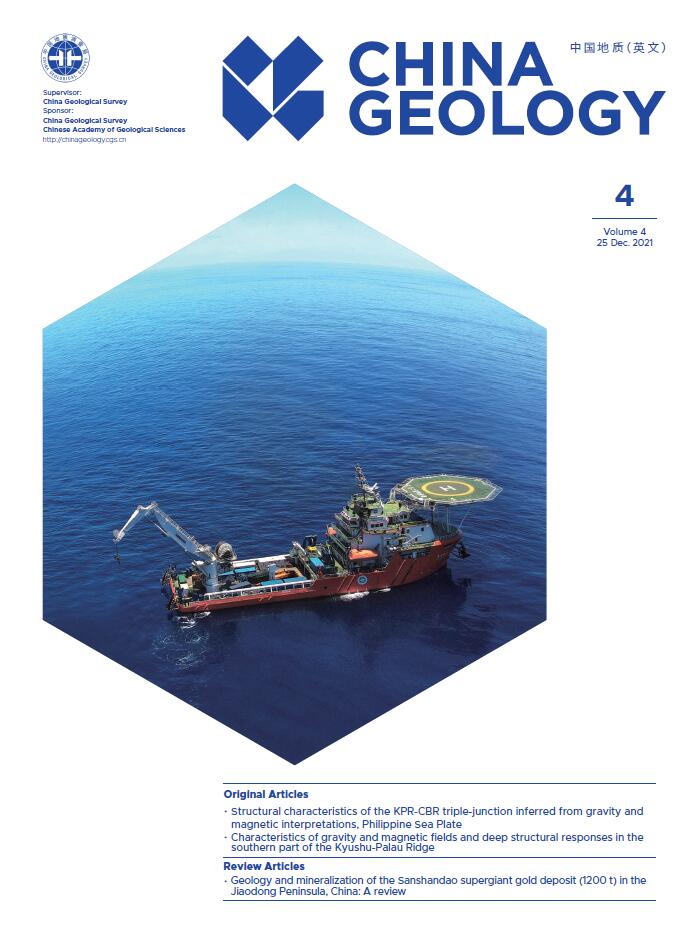



 DownLoad:
DownLoad:
